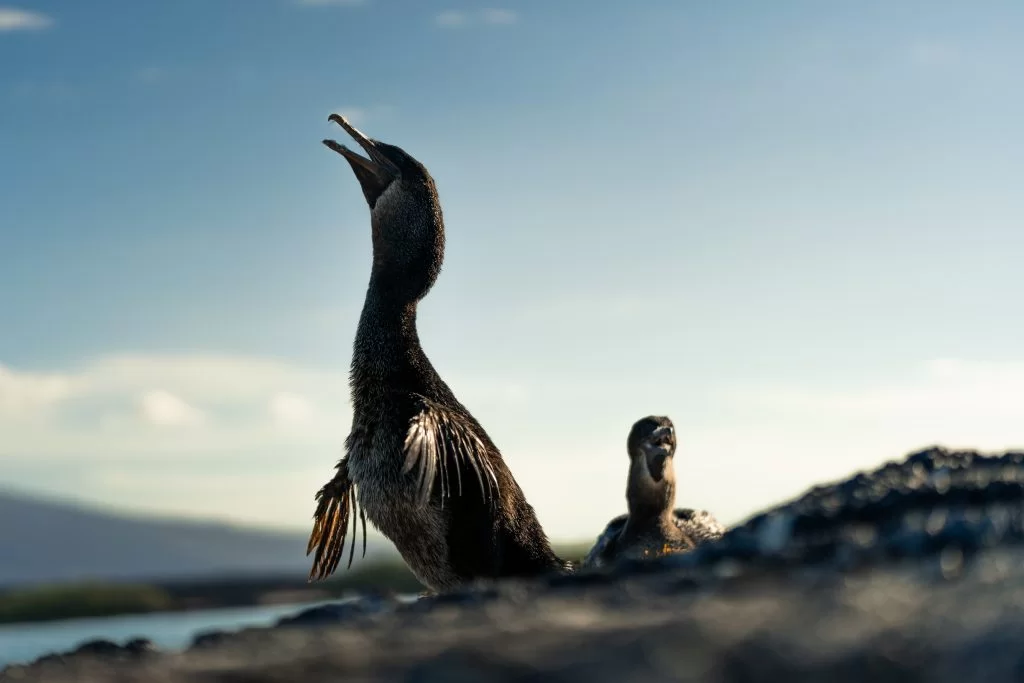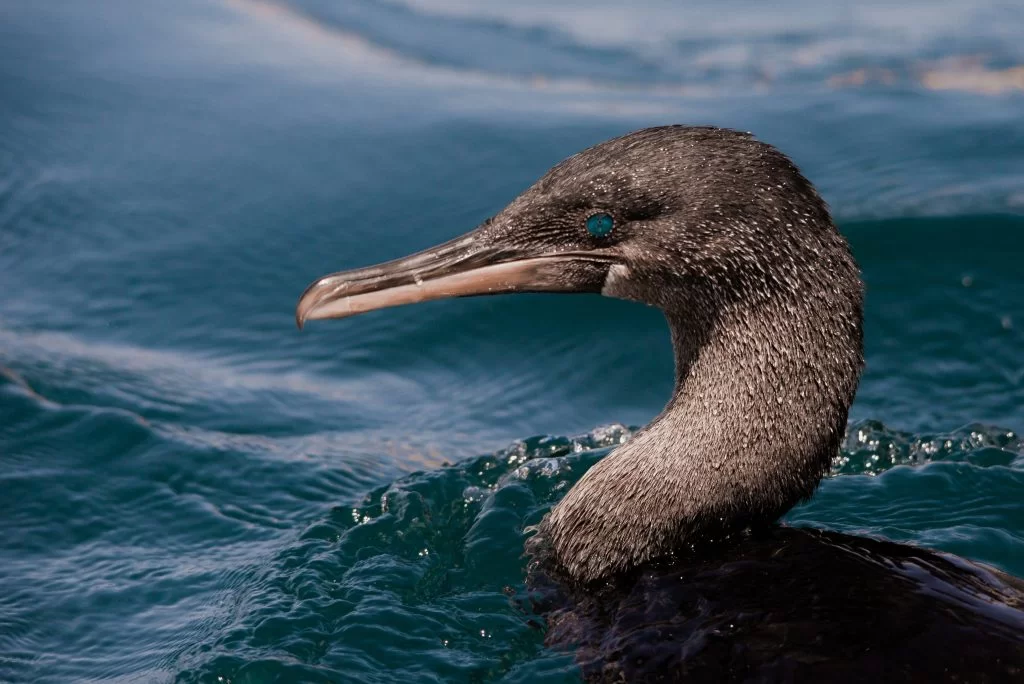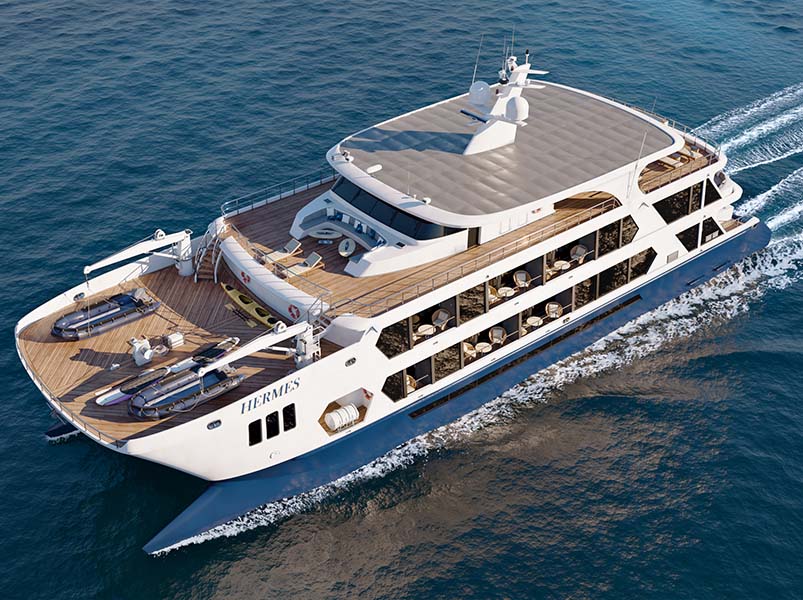Flightless Cormorant is a bioindicator of seabirds and an iconic species in the Galapagos Islands. This non-flying species is only found on the islands of Fernandina & Isabela.
Flightless Cormorants are named for their atrophied wing muscles, which prevent them from flying. The species adapted to the Galapagos Islands, where there were no terrestrial predators back two million years. This allowed them to feed easily without the need to fly long distances. The main ingredients of its diet are fish, squids, octopuses and eels from coastal waters. Flightless Cormorants swim better than their flying counterparts and are often seen relaxing on large rocks near to the coast, after hunting for food.
The Flightless Cormorant breeds during the coldest months of the Archipelago, usually between July and October, when marine foods are more abundant. The female typically lays three to four eggs in a clutch. However, only one chick survives. The male and female both take part in the incubation of the eggs, and they continue to share responsibility for feeding and protecting chicks. When the chicks are able to take care of themselves, the female will leave to find a new mate. The male is left to look after the chicks. Females can reproduce as many as three times per annum.
The IUCN Red List classifies the species as Vulnerable. According to the Galapagos National Park Directorate’s latest count in 2022 there are approximately 2,085 individuals. Flightless Cormorants are threatened by predators like snakes, cats, rats, owls and hawks. They can also be eaten by sharks. Experts say that despite these threats they can live up to 50-years.
Galapagos Conservation recognizes the importance of protecting seabirds including the Flightless Cormorant of Galapagos. Like other seabirds this species performs important ecological functions within the Galapagos ecosystems. Flightless Cormorants will continue to live on the coasts of Fernandina, Isabela, and the other Galapagos islands for generations to come if we dedicate our efforts to fighting invasive species, illicit fishing, and all other threats.

Flightless Cormorants © Joshua Vela



